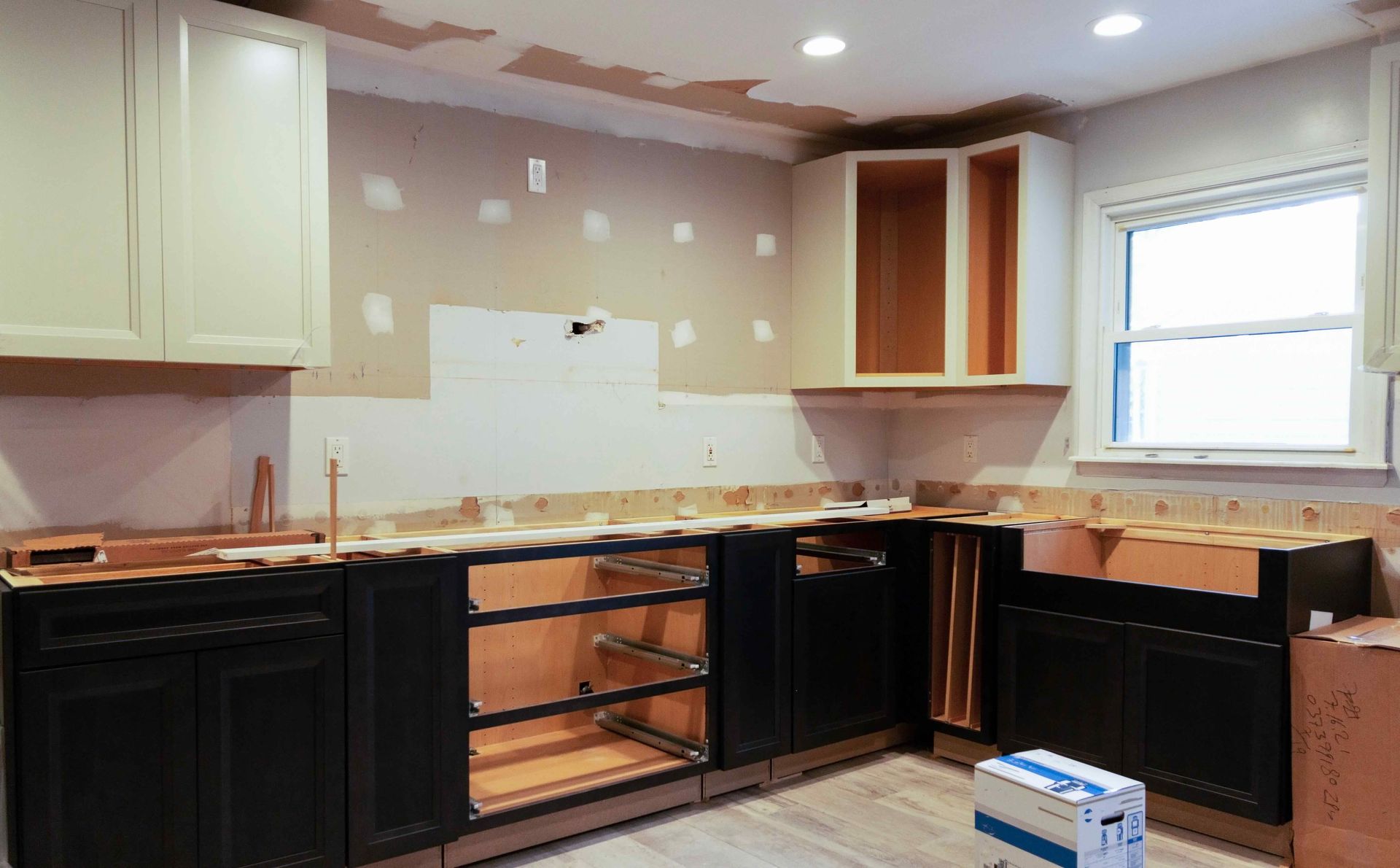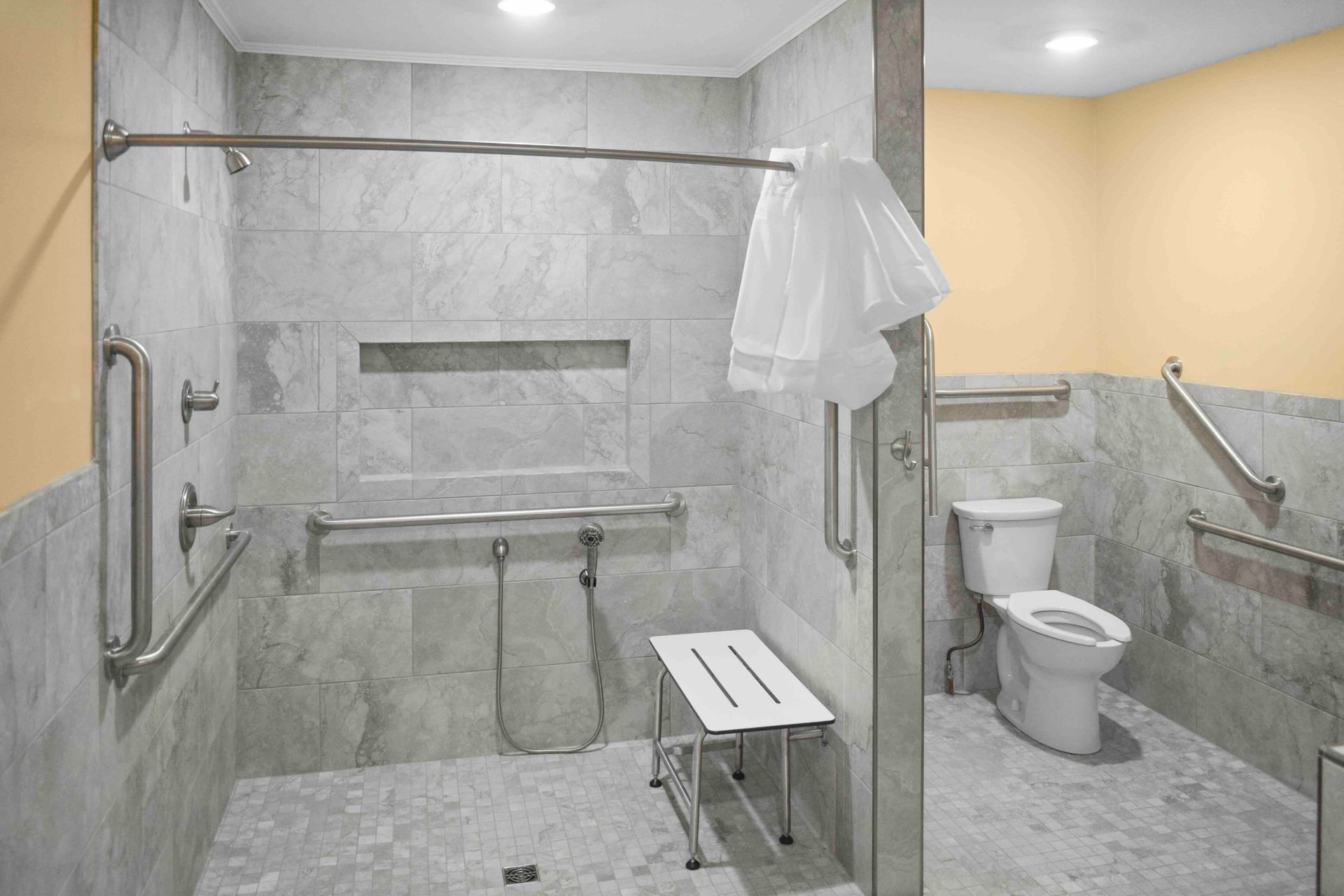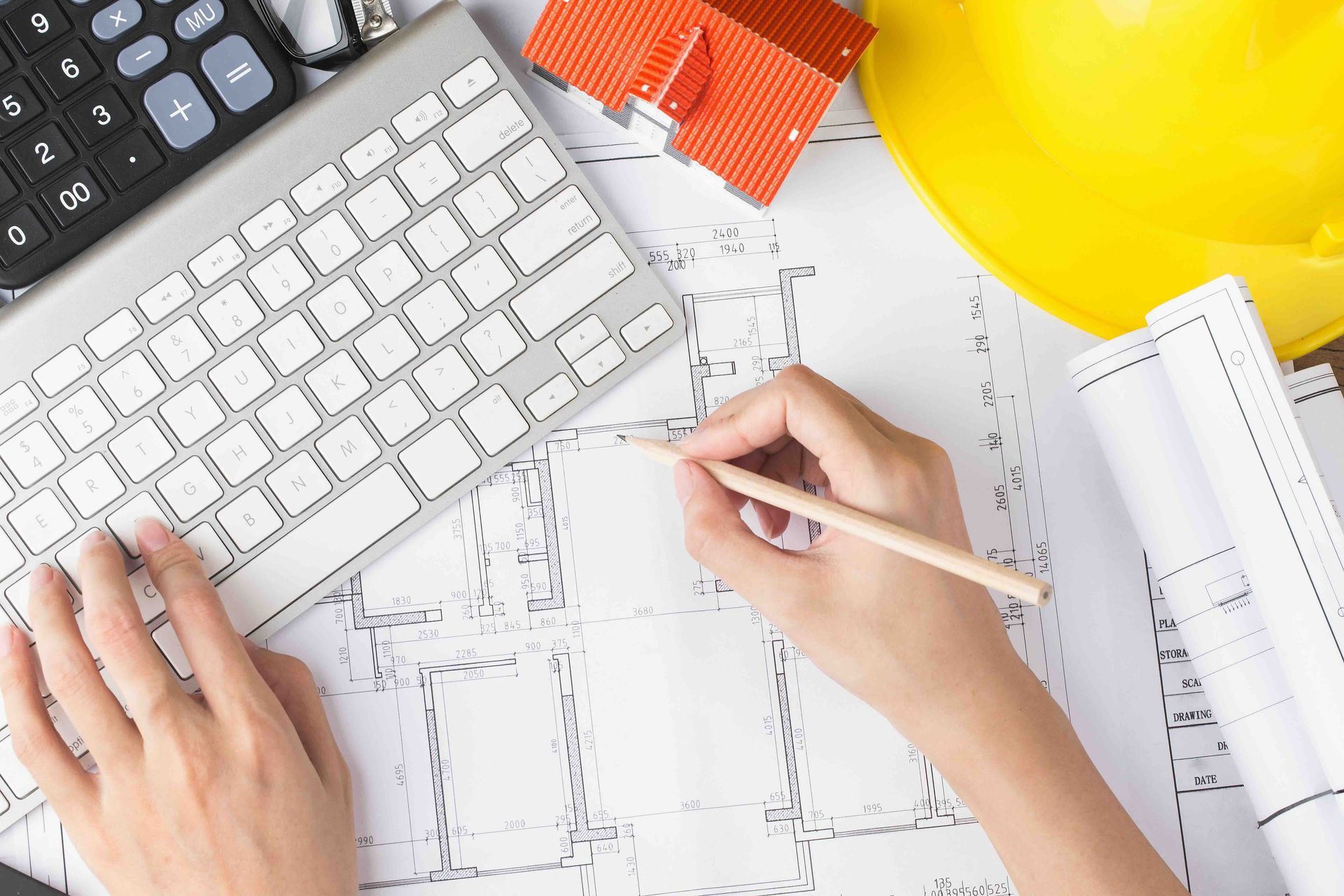Giving Compassionate Care to Family Members with Mobility Issues
Caring for a family member experiencing mobility issues is a profound act of love and commitment. It requires not only physical assistance but also a deep understanding of their emotional and psychological well-being. Providing compassionate care involves a multifaceted approach, focusing on maintaining their safety, promoting their independence, and ensuring their dignity is always upheld. This journey begins with a thorough evaluation of their specific needs and extends to creating a supportive and accessible environment.
Are you looking for an expert resource in accessible spaces, special modifications for persons with mobility challenges, and more? Contact Lakeshore Barrier Free today.
Assess the Needs of the Person
The cornerstone of providing effective care lies in a comprehensive assessment of the individual's unique needs. Mobility issues can arise from a variety of conditions, each presenting its own set of challenges and requiring tailored support. It is crucial to understand the specific limitations, the extent of assistance required for daily activities, and any associated health concerns. This assessment should not be a one-time event but rather an ongoing process, as the person's condition and needs may evolve over time.
Begin by observing and documenting the difficulties the family member encounters with various movements, such as walking, standing, sitting, transferring from one position to another, and navigating different environments within the home. Pay close attention to the specific tasks that pose the greatest challenges and the level of support they currently require. Engage in open and honest conversations with the individual to gain their perspective on their limitations and their goals for maintaining or improving their mobility. Their insights are invaluable in developing a care plan that truly meets their needs and respects their preferences.
Use the Right Assistive Devices
Assistive devices play a crucial role in enhancing the mobility and independence of individuals facing physical limitations. Selecting the appropriate devices can significantly improve their quality of life, enabling them to perform daily tasks with greater ease and safety. The choice of assistive devices should be based on the individual's specific needs, abilities, and the environment in which they will be used.
For individuals who have difficulty walking, mobility aids such as canes, crutches, walkers, and wheelchairs can provide support and stability. A physical therapist can assess the person's gait, strength, and balance to recommend the most suitable type of walking aid and ensure it is properly fitted and used. Wheelchairs offer a greater level of mobility for those who have significant limitations in walking or standing. There are various types of wheelchairs available, including manual and power wheelchairs, each with its own advantages and disadvantages depending on the user's needs and abilities.
Beyond basic mobility, other assistive devices can aid with specific tasks. Reaching aids can help individuals with limited reach to grasp objects. Long-handled shoehorns and dressing sticks can assist with dressing. Grab bars installed in bathrooms can provide support and prevent falls. Consider the individual's daily routines and identify areas where assistive devices could make a significant difference in their ability to function independently.
It is essential to ensure that the individual is properly trained in the safe and effective use of any assistive devices. A physical or occupational therapist can provide instruction and guidance on how to maneuver with the device, transfer safely, and maintain it in good working condition. Regular maintenance and adjustments are crucial to ensure the device continues to provide the necessary support and safety. The goal is to select and implement assistive devices that empower the individual to maintain their independence and participate fully in daily life.
Consider Barrier-Free Home Construction or Home Modifications
The home environment can significantly impact the mobility and safety of individuals with physical limitations. Architectural barriers, such as stairs, narrow doorways, and inaccessible bathrooms, can create significant obstacles and increase the risk of falls. Implementing barrier-free design principles or making home modifications can create a more accessible and safer living space, promoting independence and reducing the need for assistance.
For existing homes, modifications can be made to improve accessibility. Installing wheelchair ramps, widening doorways, and renovating bathrooms are common home modifications. Consider the specific challenges the family member faces within the home and prioritize modifications that will have the greatest impact on their safety and independence. For example, if navigating stairs is a significant obstacle, installing a stairlift or considering a move to a single-story living arrangement may be necessary.
When planning home modifications, it is important to consult with professionals who specialize in accessible design and construction. They can provide expert advice on the most effective and cost-efficient solutions, ensuring that all modifications meet safety standards and the individual's specific needs. Consider the long-term needs of the individual and anticipate future changes in their mobility. Creating a barrier-free or modified home environment is an investment in the individual's well-being, allowing them to live more comfortably and independently.
Assess if a Patient Lift Would Be Beneficial
For individuals with significant mobility limitations, transferring between different surfaces, such as from a bed to a chair or from a wheelchair to a toilet, can be challenging and potentially dangerous for both the individual and the caregiver. In such cases, a patient lift can be a valuable piece of equipment, providing a safe and efficient way to assist with transfers while minimizing the risk of injury.
There are various types of patient lifts available, including overhead lifts and floor-based lifts. Overhead lifts are typically installed permanently and involve a track system mounted to the ceiling, allowing for smooth and controlled transfers. Floor-based lifts are portable and can be moved from room to room as needed. The choice of lift will depend on the individual's specific needs, the layout of the home, and the caregiver's abilities.
Invest in Safety Equipment Such As Permanent or Temporary Wheelchair Ramps
Navigating steps and thresholds can be a significant challenge for individuals using wheelchairs or other mobility aids. Investing in safety equipment such as wheelchair ramps is essential for providing safe and independent access to different levels and areas within and around the home. Ramps eliminate the barrier posed by steps, reducing the risk of falls and making it easier for the individual to move freely.
Both permanent and temporary wheelchair ramps are available, each with its own advantages. Permanent ramps are typically constructed from materials such as concrete, wood, or metal and are designed for long-term use. They can be customized to fit specific entryways and inclines, providing a stable and durable solution. Temporary ramps are portable and can be easily moved and stored. They are often made of lightweight materials such as aluminum and are ideal for situations where a permanent ramp is not feasible or necessary, such as for accessing vehicles or navigating temporary obstacles.
When choosing and installing a wheelchair ramp, it is crucial to adhere to safety guidelines regarding the maximum slope, width, and the presence of handrails if required. A gradual slope is essential for safe and comfortable navigation. Building codes often specify the maximum allowable slope for ramps. The width should be sufficient to accommodate the wheelchair or mobility aid being used. Handrails can provide additional support and stability for individuals who are able to ambulate with assistance.
Proper installation of permanent ramps is critical to ensure their stability and safety. It is often advisable to consult with professionals who have experience in ramp construction. Temporary ramps should be placed on a stable and level surface and secured to prevent movement during use. Regular inspection and maintenance of both permanent and temporary ramps are necessary to identify and address any potential hazards. Investing in well-designed and properly installed wheelchair ramps significantly enhances the accessibility and safety of the home environment.
Encourage Independence
While providing care and assistance is essential, it is equally important to encourage the family member's independence to the greatest extent possible. Maintaining a sense of autonomy and control over one's life is crucial for self-esteem and overall well-being. Avoid doing things for the person that they are capable of doing themselves, even if it takes them longer or requires more effort.
Identify areas where the individual can participate in daily activities, even with modifications or assistive devices. This might include dressing, eating, grooming, or household tasks. Break down tasks into smaller, more manageable steps and provide support and encouragement as needed. Celebrate their successes, no matter how small, to reinforce their efforts and build their confidence.
Create opportunities for the individual to make choices and decisions about their care and daily life. This includes their preferences for meals, clothing, activities, and how they want their care to be provided. Respecting their choices fosters a sense of control and dignity. Encourage them to pursue their interests and hobbies, and provide the necessary support to enable their participation.
It is important to strike a balance between providing necessary assistance and promoting independence. Over-assisting can lead to dependence and a loss of self-confidence. Observe the individual's abilities and provide support only where it is truly needed. Be patient and allow them the time and space to do things for themselves. Encouraging independence not only benefits the individual's psychological well-being but can also help to maintain their physical abilities for longer.
Listen and Address Anxieties and Fears
Living with mobility issues can evoke a range of emotions, including anxiety, fear, frustration, and sadness. It is crucial for caregivers to be empathetic listeners and to address these emotional concerns with sensitivity and understanding. Create a safe and supportive environment where the family member feels comfortable expressing their feelings without judgment.
Take the time to listen attentively to their concerns, whether they relate to their physical limitations, their fear of falling, their worries about becoming a burden, or their anxieties about the future. Acknowledge their feelings and validate their experiences. Let them know that it is okay to feel the way they do and that you are there to support them emotionally as well as physically.
Address specific anxieties and fears by providing information, reassurance, and practical solutions. If they are afraid of falling, take steps to improve home safety, such as removing tripping hazards and installing grab bars. If they are worried about losing their independence, focus on strategies and assistive devices that can help them maintain their autonomy.
Encourage open communication and create opportunities for them to connect with others who may be facing similar challenges, such as through support groups. Sharing experiences and connecting with others can help reduce feelings of isolation and provide valuable emotional support. If the anxiety or fear is persistent or overwhelming, consider seeking professional help from a therapist or counselor who specializes in working with individuals with disabilities. Addressing the emotional well-being of the family member is just as important as addressing their physical needs.
Remove Tripping Hazards
Creating a safe home environment is paramount for individuals with mobility issues, and one of the most important aspects of this is the removal of tripping hazards. Falls can have serious consequences, leading to injuries, loss of confidence, and a decline in independence. A proactive approach to identifying and eliminating potential hazards is essential.
Conduct a thorough assessment of the home environment, paying close attention to areas where the family member spends the most time. Look for loose rugs or carpets, cluttered pathways, electrical cords running across walkways, uneven flooring, and any other objects that could cause someone to trip or stumble.
Secure or remove loose rugs and carpets. If they cannot be removed, use non-slip mats or tape to keep them firmly in place. Ensure that pathways are clear and free of clutter. Store items properly and avoid leaving objects on the floor. Neatly organize electrical cords and secure them along walls or use cord management devices.
Address any uneven flooring or loose tiles. Repair any damage promptly to create a smooth and level walking surface. Be mindful of changes in floor surfaces, such as going from hardwood to carpet, as these transitions can sometimes pose a tripping hazard. Consider using transition strips to create a smoother change in height. Regularly inspect the home for new or overlooked hazards and take immediate steps to eliminate them. A clutter-free and hazard-free environment significantly reduces the risk of falls and promotes the safety and well-being of the individual with mobility issues.
TALK TO THE EXPERTS OF LAKESHORE BARRIER FREE TODAY!
We believe that everyone should have access to every area of their home! We work directly with you to make sure that every grab bar, bathroom sink, kitchen countertop, patient lift, and more is at the perfect location for you and your loved ones. Call us at
(616) 477-2685 or email us at
Info@LakeshoreBarrierFree.com
Share this blog







